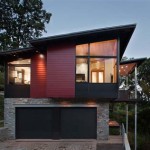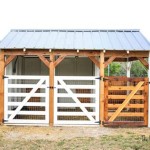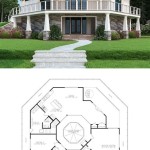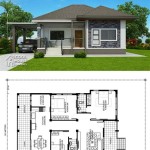Design Your Dream Home With Motorhome Garage House Plans UK
The convergence of lifestyle trends and practical needs has led to an increased interest in motorhome garage house plans within the United Kingdom. This innovative design approach seeks to seamlessly integrate living spaces with dedicated storage and maintenance facilities for recreational vehicles, offering a unique blend of convenience, functionality, and potential cost savings. Understanding the nuances of these plans is crucial for anyone considering such a project, whether it's for personal use, rental income, or a combination of both.
The design considerations for motorhome garage house plans go beyond simply adding a large garage to a standard house blueprint. They require a comprehensive understanding of the specific dimensions of the motorhome, local planning regulations, structural engineering principles, and the overall aesthetic integration with the surrounding environment. Furthermore, the evolving nature of motorhome technology and amenities necessitates a flexible and adaptable design that can accommodate future upgrades and changes.
This article will explore the key aspects of designing a dream home with motorhome garage house plans in the UK, covering crucial factors such as planning permission, structural integrity, aesthetic considerations, and the potential benefits and challenges associated with this type of dwelling.
Planning Permission and Building Regulations
Obtaining the necessary planning permission is the first and often most challenging step in building a motorhome garage house in the UK. Local planning authorities have specific guidelines regarding the size, height, and location of buildings, and these must be strictly adhered to. The application process typically involves submitting detailed architectural drawings, site plans, and environmental impact assessments.
The size of the garage is a critical factor in determining the feasibility of the project. Motorhomes come in various sizes, and the garage must be large enough to comfortably accommodate the intended vehicle, with sufficient clearance for maneuverability and maintenance. Planning regulations often impose limits on the overall footprint of the building, so careful consideration must be given to balancing the size of the garage with the living space.
Building regulations in the UK cover a wide range of aspects, including structural safety, fire safety, insulation, ventilation, and accessibility. The motorhome garage itself will be subject to specific regulations regarding fire separation from the living areas, ventilation to prevent the build-up of fumes, and structural support to withstand the weight of the vehicle. It is advisable to consult with a qualified architect and structural engineer to ensure that the plans meet all the necessary requirements.
The external appearance of the building is also a key consideration for planning permission. The design should be sympathetic to the surrounding architecture and landscape, and the use of appropriate materials and finishes is essential. Some planning authorities may require the submission of visualisations to demonstrate how the building will look in its context.
Consideration should be given to the potential impact on neighboring properties. Issues such as overlooking, overshadowing, and noise pollution need to be carefully addressed in the design. It may be necessary to consult with neighbors and address any concerns they may have before submitting the planning application.
Structural Considerations and Garage Design
The structural integrity of a motorhome garage house is paramount, given the potential weight of the vehicle and the need to withstand environmental forces such as wind and snow. The design must incorporate robust foundations, walls, and roof structures that can adequately support the loads involved. A structural engineer will typically be required to calculate the necessary dimensions and specifications for these elements.
The floor of the garage needs to be specifically designed to withstand the weight of the motorhome. A reinforced concrete slab is typically the preferred option, with a minimum thickness and reinforcement layout specified by the structural engineer. The slab should be level and have a smooth surface to facilitate easy maneuvering of the vehicle.
The walls of the garage can be constructed from a variety of materials, including brick, blockwork, or timber frame. The choice of material will depend on factors such as cost, availability, and aesthetic preferences. The walls should be adequately insulated to provide thermal comfort and reduce energy consumption.
The roof of the garage can be designed as either a flat roof or a pitched roof. A flat roof is often the more economical option, but it requires careful detailing to ensure proper drainage and prevent water leakage. A pitched roof can provide additional storage space in the attic, but it may be more expensive to construct.
Access to the garage is another important consideration. A large roller shutter door is typically the most practical option, allowing easy entry and exit for the motorhome. The door should be electrically operated for convenience and security. A separate pedestrian door may also be required for access to the garage without opening the main door.
Integrating Living Spaces and Aesthetic Design
The successful integration of living spaces with the motorhome garage is crucial for creating a functional and aesthetically pleasing home. The design should seamlessly blend the garage with the living areas, creating a cohesive and harmonious environment. This can be achieved through careful planning of the layout, the use of consistent materials and finishes, and the incorporation of natural light and ventilation.
The internal layout of the house should be carefully considered to maximize space and functionality. The living areas should be located away from the garage to minimize noise and fumes. The garage can be accessed through a hallway or utility room, providing a buffer zone between the living areas and the garage.
The choice of materials and finishes is essential for creating a cohesive aesthetic. The exterior of the house should be designed to complement the surrounding architecture and landscape. The interior of the house should be designed to be comfortable, functional, and aesthetically pleasing.
Natural light and ventilation are crucial for creating a healthy and comfortable living environment. Large windows and skylights can be used to maximize natural light in the living areas. Adequate ventilation is essential for removing moisture and pollutants from the air. The garage should be well-ventilated to prevent the build-up of fumes.
The integration of landscaping can further enhance the aesthetic appeal of the property. Trees, shrubs, and flowers can be used to soften the appearance of the building and create a more inviting environment. A well-designed garden can also provide a valuable outdoor living space.
Consideration should be given to energy efficiency. Insulation exceeding minimum standards for walls, roofs, and floors contributes to reduced heating and cooling costs. Solar panels, integrated into the roof design, can provide a renewable energy source, further reducing utility bills and improving the environmental footprint of the home. Windows, doors, and skylights with high thermal ratings minimize heat loss and gain, contributing to a more comfortable and energy-efficient living environment.
The design should also consider the potential for future expansion or modification. The garage could be designed to be easily converted into additional living space if needed in the future. The layout of the house should be flexible enough to accommodate changes in lifestyle and needs.
In summary, designing a dream home with motorhome garage house plans requires careful attention to detail and a thorough understanding of local regulations, structural engineering principles, and aesthetic considerations. By working closely with a qualified architect, structural engineer, and builder, it is possible to create a unique and functional home that perfectly meets the needs of its occupants.

2 Bedroom House Plan With Twin Car And Rv Garages 3800sqft For 59x65 Instant Home Designs Now Etsy Uk

Modern Home Plans Rv Garage Rustic Minimalist Blueprints Dream Ranch 3 Bedroom 2 Bath Covered Patio Oversized Etsy Uk

Modern Home Plans Rv Garage Rustic Minimalist Blueprints Dream Ranch 3 Bedroom 2 Bath Covered Patio Oversized Etsy Uk

Plan 61241ut Traditional 5 Bed Home With Rv Garage And Possible Lower Level Adu Apartment

2 Bedroom House Plan With Twin Car And Rv Garages 3800sqft For 59x65 Instant Home Designs Now Etsy Uk

2 Bedroom Garage Apartment House Plans Rv Bus Big Rig 1 5 1257 Square Feet 47 X41 Front Porch Small Floor Plan Etsy Uk

Modern 4 Bedroom House Plan With Rv Garage Open Floor Private Bathrooms Loft And Spacious 2 Story Design Etsy Australia

Plan 61241ut Traditional 5 Bed Home With Rv Garage And Possible Lower Level Adu Apartment

Plan 62952dj Rv Pole Barn Garage With Home Office Attached

Southern Style House Plan 4 Beds 5 Baths 4816 Sq Ft 406 9614
Related Posts








